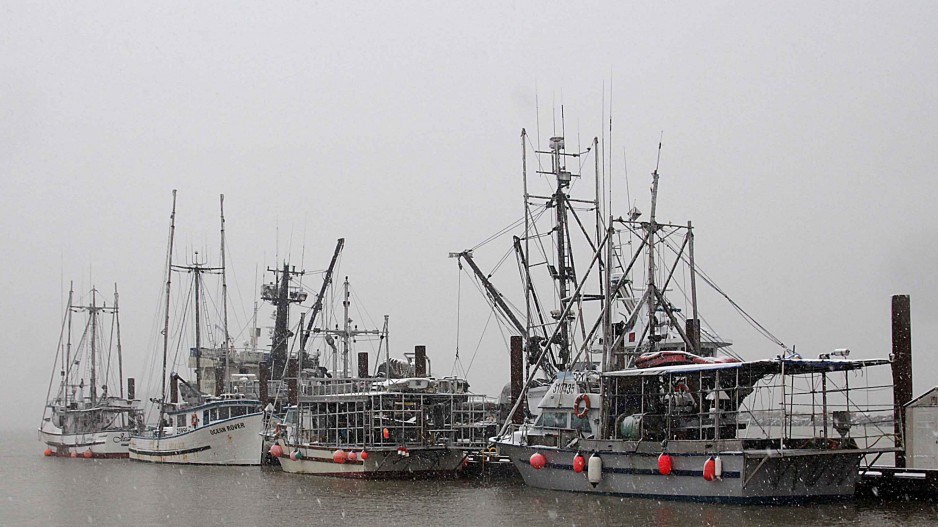Fraser River sockeye returns are expected to be too low to allow for a commercial harvest this year, so if anyone sees boats on the water setting nets, or anyone selling salmon from the backs of trucks by the roadside, they are likely illegal.
Fisheries and Oceans Canada says it has removed more than 200 illegally set fishing nets and other gear from the Fraser River to date, and are calling on the public not to buy salmon that is illegally caught.
Asked if any charges have been laid yet, Mike Fraser, detachment commander for DFO's Fraser Valley East, said 12 active investigations are ongoing.
"Likely most of those will result in charges," he said.
If last year is anything to go by, Greg Taylor, a fisheries adviser for Watershed Watch, suspects few charges will be laid. And even if charges are laid, the Crown may be reluctant to pursue them, if First Nations are involved, since that can be a legal minefield. A number of cases in Canada involving “illegal” fisheries have actually ended up confirming indigenous fishing rights.
“Charges are very few and far between, relative to all the seizures and all the interaction they have,” Taylor said. “There are no consequences to this. They seized 212 nets, but those 212 nets are back out there the next day. Seizing 212 nets is a sign of failure, not a sign of success.”
Watershed Watch raised concerns with DFO last year over illegal fishing on the Fraser River. It appears to be even more widespread this year, said Taylor said. The area where most of the illegal activity has taken place on the Fraser is between the Port Mann Bridge and Lillooet, Fraser said. He said about 25 officers are activity patrolling that area.
One of the concerns over illegal fishing is not just the impact on sockeye, but chinook as well. And it can throw management plans out of whack, since illegally caught fish are obviously not officially recorded and reported.
“You’ve got to come up with some estimate of how many they’re killing and include that in your management plans,” Taylor said. “The biggest problem -- from a conservation point of view -- is this is probably the largest single harvest impact on endangered fish, and it’s not being accounted for in any kind of management plan or recovery plan.”
The forecast for this year’s Fraser River sockeye returns are not expected to be high enough to allow any commercial harvesting. There is the added pressure of extreme heat, higher than average river temperatures, and lower than average river flows that could negatively affect the ability of salmon to make it to their spawning grounds. The Fraser River is about 1.1 degrees Celsius higher than average and flow levels are 21% lower, according to the Pacific Salmon Commission (PSC).
“The extreme heat wave and wildfires that affected much of western North America, are likely impacting migration conditions for Fraser River sockeye,” the PSC says in a recent update.
Illegal fishing just adds another stress on already vulnerable salmon stocks.
“This kind of activity is one more pressure on these fish that are already struggling for many reasons,” said Jennifer Nener, director of salmon management for DFO’s Pacific region.
The public is asked to do its part to discourage illegal fishing by simply not buying wild salmon from unauthorized and unapproved sources.
The pre-season median forecast for this year’s Fraser River sockeye returns was 1.33 million fish.
“For Fraser River sockeye, that is a very low number,” Nener said.
In-season test fisheries indicate this year’s Fraser River sockeye return may actually be a bit higher than the pre-season forecast. The adjusted forecast now estimates a return of 1.44 million sockeye, which is still too low to allow for a commercial fishery for Fraser River sockeye this year.
Since about 1 million fish are needed for escapement, 1.44 million may be enough for some First Nations food, social and ceremonial (FSC) harvesting, though no FSC harvesting has been approved yet for Fraser River sockeye, according to DFO.
Taylor said the updated numbers for sockeye suggest this year’s return will not be as much of a “disaster” as had been feared.
“Chinook, on the other hand, are a lot worse,” he said. “The returns of (the) Albion test fishery are just abysmal. It’s just frighteningly bad.”
This is also a pink salmon year for the Fraser River, with the pre-season forecast of 3 million. But even if there were sufficient pinks returning to allow for a commercial harvest, there still may be no commercial openings, due to fears of bycatch affecting the coho, steelhead and sockeye that may mingle with pink salmon.




